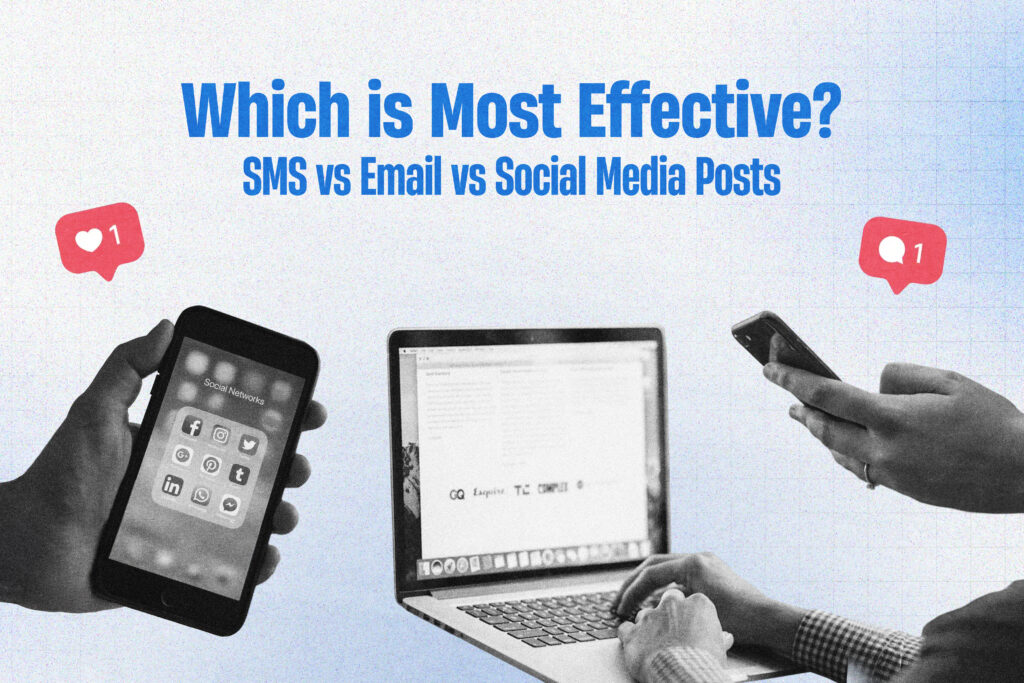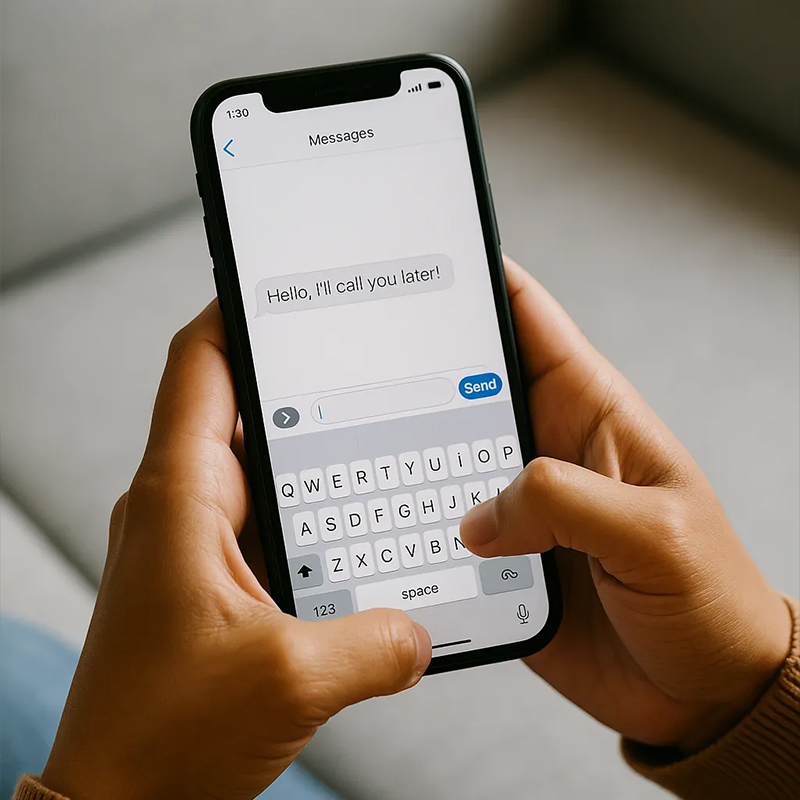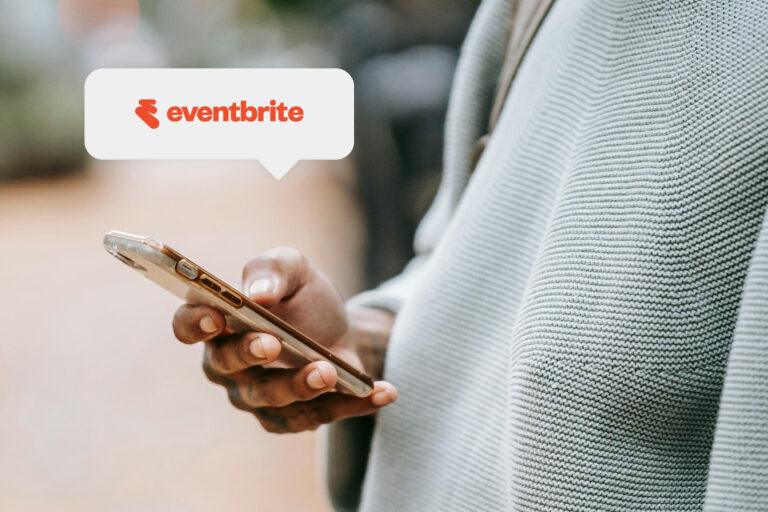
Maximize Visibility, Engagement, and ROI by Choosing the Right Tool for the Job
Where Do We Start?
If you run a business today, you probably use at least one major digital marketing channel. This could be social media, email, or SMS. Each of these channels has its own strengths and tradeoffs, but with so many options, how do you know which one works best for your goals? The answer isn't always clear-cut. In this article, we will explain what makes each channel special. We will compare them based on important criteria for your business. This isn't about picking one winner—it's about understanding how each one fits into your strategy.
TL;DR: What’s the Best Marketing Channel? SMS, Email, or Social Media?
Each channel, Social Media, Email, and SMS, has unique strengths:
- Social Media is free to use, easy to grow, and great for broad exposure and sharing—but has the lowest visibility and engagement.
- Email is flexible, customizable, and affordable—but risks getting lost in inboxes and has moderate response rates.
- SMS offers unmatched visibility (98% open rate) and fast, direct engagement—but costs more per message and requires strict opt-in compliance.
Instead of picking a single winner, smart marketers combine channels. For example, use social media to attract leads, email to educate, and SMS to drive action. The most effective strategy aligns the right message with the right channel at the right time; something platforms like Chatavise make seamless.
Which 3 Marketing Channels Are We Comparing?
Social Media Posts
Social media includes platforms like Facebook, X, TikTok, Instagram, LinkedIn, etc. These are social sharing websites that allow users to upload photos, post comments and connect with one another. Becoming very popular in the early 2000s with MySpace and Facebook, it took storm in the 2010s with mobile first platforms like Instagram, Snapchat, and TikTok. There are now more than 5 billion users worldwide!


Email is electronic mail that is used for direct communication between sender and recipient. Invented in 1971, email gained mainstream usage in the mid 90s with services like Yahoo, AOL, and Hotmail. 2000s were when businesses really began to use it to promote services in forms of news letters and transactions. According to cloudHQ, email is one of the most widely used tools with 4.83 billion users around the world (https://blog.cloudhq.net).
SMS
One of the newer mediums, it is very similar to email, allowing direct communication with a recipient over text message, allowing the sender to send pictures and text with certain character limits (160 for SMS and 1,600 for MMS). According to Telnyx State of SMS Marketing 2025, the SMS marketing industry will reach a market size of $12.6 billion, expanding at an annual growth rate of 20.3%. Also, 17.4% of online revenue for brands came from SMS marketing.

What Are We Comparing?
The criteria we will be using to compare these 3 marketing channels will be startup cost, exposure, social sharing, subscriber building, visibility, response time, content flexibility, personalization, and ROI. We believe these 9 criteria are a good way to show what businesses want in marketing their message to the public.
These criteria are not ranked by importance nor should be scored to be made tangible. Each platform is important in your sales funnel in its own way. Just because one platform performs better in one category does not mean the others are ineffective. Everything can work depending on the specific use case at hand.
We make reference to “warmer leads” a few times in this comparison. Warmer leads are those who’ve already shown interest or taken action—like signing up, clicking a link, or replying.
ROI
Return on investment goes beyond just cost and dives into how much revenue can actually be made for every dollar invested into a marketing channel
Winner: SMS
Email is around $36-42 for every $1 spent (https://www.forbes.com), social media is around $2.5 for every $1 spent (amraandelma.com). While that is still very good, there is a clear winner amongst the 3.
SMS boasts a solid $72 for every $1 spent (https://www.engagelab.com). With it’s high open and response rates, it is definitely not hard to believe that those who explicitly opt-in will also be highly likely to convert to customers.
Visibility
Even if you send it, doesn’t mean they’ll see it. Let's talk about visibility. Visibility is the chance that your target audience will actually see the message that you broadcast.
Winner: SMS
Email can end up in spam or go to another folder in your inbox. This happens because of the provider's filtering system. It also is communicating across many different other emails that land in that user's inbox each day. Social media reaches many people, but it also faces tough competition. Many brands and unrelated things compete for users' attention. Users often scroll endlessly through profiles. LinkedIn in 2025 only had an open rate of 5%. Email works like SMS in how people respond. However, it can get lost among many other emails. This makes it less effective. Usually email only has an open rate of about 20-30%.
With SMS, there is a 98% open rate. Subscribers who opted in this way are some of the warmest leads. They have given you permission to contact them directly. This leads to a higher interest in the messages you send through this method.
Response Time
Once your message is out, how quickly do people act? That’s what this section is all about. Response and engagement show how often and how quickly people reply to your message after it is sent. In this context we will specifically look for things that would lead to a warmer lead.
Winner: SMS
With social media, many users comment on posts and share them. However, it is not always as clear when qualifying a lead. This is especially true compared to a direct response from a text message. This does not mean social media is not effective, just that SMS can often be more effective in regards to responses that lead to sales. LinkedIn in 2025 only had response rates of 2.5% (https://amplitudemktg.com). LinkedIn InMail had a response rate around 20%. Email works like SMS in how people respond. However, emails can get lost or compete with many others. This makes email less effective. Email has a response rate of 6%.
With SMS, there is a 45% response rate. Your subscribers allowed you to use one of their personal communication methods. Because of this, they are more likely to respond. This shows their interest in your company.
Personalization
Finally, how personal can your message feel? Let’s explore what personalization really looks like across channels. Personalization in this context means that you can customize your message to fit an exact recipient.
Winner: Tie between SMS and Email
Social media can reach many people, but it limits personalization. You can send direct messages, but you usually need to be a friend or use InMail on LinkedIn. This is not saying that it cannot be done, just that it does not come out of the box as personalized as SMS and email.
With SMS and email, it comes with personalization by default. If you use the right platforms, you can change the name to match your recipient. You can also add details about their activity or other custom fields from your CRM.
Startup Cost
Finally, how personal can your message feel? Let’s explore what personalization really looks like across channels. Personalization in this context means that you can customize your message to fit an exact recipient.
Winner: Tie between SMS and Email
Social media can reach many people, but it limits personalization. You can send direct messages, but you usually need to be a friend or use InMail on LinkedIn. This is not saying that it cannot be done, just that it does not come out of the box as personalized as SMS and email.
With SMS and email, it comes with personalization by default. If you use the right platforms, you can change the name to match your recipient. You can also add details about their activity or other custom fields from your CRM.
Exposure
Once you're sending messages, how wide is your potential audience? That’s what exposure is all about. Exposure is the ability to cast the widest net that you possibly can when broadcasting your posts and messages.
Winner: Social Media
With social media, you can reach millions of users. Your content is searchable on their platforms. Algorithms help your content appear to people who are already looking for it or are interested.
With email and SMS, you can only reach people who have signed up to hear from you. They do this by filling out a form or texting a keyword.
Social Sharing
Sharing matters. Here's how well each channel allows your message to spread organically. Social sharing is the ability for your message to be seen and shared amongst recipients.
Winner: Social Media
SMS and email have many limits for this. You can only send a mass text or email by CCing everyone. But please don't do that! This will lead to very unorganized sharing and responses from those recipients.
Social media is built-in with sharing. It was its purpose when it was first created. While it is not as direct as SMS or email, its strength is in how many people can see your business's messages and broadcasts.
Subscriber Building
Now let’s think about how hard or easy it is to even build your audience. Opt-in barriers refer to the challenges of getting new subscribers. This is important for sharing your message with a larger audience.
Winner: Social Media…with a caveat
SMS and email are highly governed by TCPA, CAN-SPAM, GDPR. With SMS and email, recipients must give explicit consent in order to opt in. This can be done by filling out a compliant form or texting a keyword. This will send them rules about the subscription and how to opt out. To reduce spam sent to recipients, personal communication is very important.
With social media, you do not need opt-ins. That does not exist. You can share your message with the world without needing permission. Just make sure your content follows the platform's rules.
Content Flexibility
Some messages are short and sweet. Others need more room. Here's where we look at content flexibility. Content flexibility means how much content and graphics you can include in the message you are sharing.
Winner: Email
Social media and SMS can have rich content. However, both usually have a character limit. While SMS has a higher character limit than MMS, receiving a message over 1,000 characters can be uncomfortable. In the end, it is just text, which can make the delivery unpleasant.
With email, you can use HTML in your message. This makes your message look better and lets you add nice features like buttons. RCM messaging is now coming to texting, and it can change things. However, we believe it still won't match the content flexibility that email offers.
Below is a table showing the difference amongst the 3 channels in our different categories:
| Category | Social Media | SMS | |
|---|---|---|---|
| ROI | $2-10 for every $1 | $36-42 for every $1 | $72 for every $1 |
| Startup Cost | $0 | Very little | $0.01-$0.05 per message segment |
| Visibility | The lowest, open rate is about 5% depending on the platform | Open rate is relatively high at 45% | The best, 98% open rate |
| Response Time | 0.5 - 2.5% across variety of platforms. LinkedIn InMail response rate is upwards to 20% | Response rate is about 6% | Response rate is about 45% with click through rate around 20-35% |
| Personalization | Very limited as posts are meant to broadcast to many readers | High level of personalization due to 1-1 communication | High level of personalization due to 1-1 communication |
| Exposure | Very wide to a broad audience and just about anyone | Narrow & targeted but for those who were interested enough to give their email | Very narrow but for those who are truly interested |
| Social Sharing | Easy for others to view who is commenting on posts and easy to share | Not possible to share and usually meant for 1-1 communication | Very hard to share and usually meant for 1-1 communication |
| Subscriber Building | No opt-in required | Relatively easy and requires form fillout with consent | More difficult and more requirements by carrier to ensure proper opt-in |
| Content Flexibility | Limited due to character limits but does offer polling and rich images | Very rich due to using HTML. Easy and expected to create long-form content | Limited due to character limits (160 SMS and 1,600 MMS) also rich media does not go beyond images |
Let’s put it all together
Before becoming dogmatic on which channel to use, it's wise to take a step back and view your sales funnel as a whole. How do your prospects find your business currently? How do you want them to find you? Let's put together a sales funnel example depending on the origin point. We will use Chatavise as the SMS platform of choice. In this example we will leverage social media posts and SMS.
Social Media Contest Funnel
Let’s say right now, most of your clients found you through your social media posts. It would be a mistake to stop using that. However, you can still use email or SMS to reach the most interested leads.
- Start with social media. Let’s take advantage of social media’s exposure strengths and generate posts that large audiences can find us. Create a contest on your page that recipients must text ‘WIN’ to your A2P 10DLC compliant phone number in order to enter. You can use a Chatavise QR code. It will open the messaging app on their phone. Your business phone number and keyword will be added automatically. All they have to do is hit send!
- Recipient is now opted into your SMS subscriber list. From here, let’s leverage Chatavise’s auto tagging system from the keyword, WIN, to tag subscribers as “Contest Funnel” as they opt-in.
- Leveraging Chatavise Workflows, welcome the new subscriber to your texting line with an automatic text message to let them know they are now entered into the contest.
- Within that workflow, you can schedule messages out to then potentially try and book a meeting/call with that lead as well as leverage our Campaigns feature to bulk text all of those who are under that tag with a link to an event, webinar, or product page that you host.
We are now leveraging the most direct and personal form of 2 of the 3 channels but starting from the top, these leads were interested enough to give you their phone number and agree to texting, and you did not have to really change your strategy!
As you can see, at the top of the funnel we can use the best tool for capturing a wide, shallow net for most exposure, social media. No opt-in was required for this post, which means a very low barrier to entry. We then focused on finding leads who wanted to join the contest. We increased our “visibility” by being available through SMS. Also, since they are more interested in our company, we can expect a higher response and conversion rate. We did not have to lift a finger doing this due to the automation that Chatavise brought to the table!
So... Which One Wins?
So what's the takeaway here? All three channels—social media, email, and SMS—have clear strengths and specific use cases. Social media helps you cast a wide net. Email gives you the flexibility to deliver deeper content. SMS gives you the immediacy and intimacy to get direct responses from your most engaged audience. The key is not to crown a winner but to understand how each one can work together in your overall strategy. When done right, you don't need to pick one—you just need to know when and how to use each. And if you're using a tool like Chatavise, the integration between these channels becomes that much more seamless.
Sources
- https://telnyx.com/resources/state-of-sms-marketing-2025-trends-growth-and-opportunities
- https://www.socialinsider.io/social-media-benchmarks/linkedin
- https://www.getresponse.com/resources/reports/email-marketing-benchmarks
- https://www.smscomparison.com/sms-statistics/
- https://amplitudemktg.com/social-media/average-engagement-rates-for-12-industries-june-2024
- https://powertextor.com/blogs/sms-marketing-in-2024-statistics
- https://www.amraandelma.com/paid-social-roi-statistics
- https://www.forbes.com/advisor/business/software/email-marketing-statistics
- https://www.engagelab.com/blog/sms-marketing-pricing
- https://blog.cloudhq.net/email-statistics-report-2025-2030


